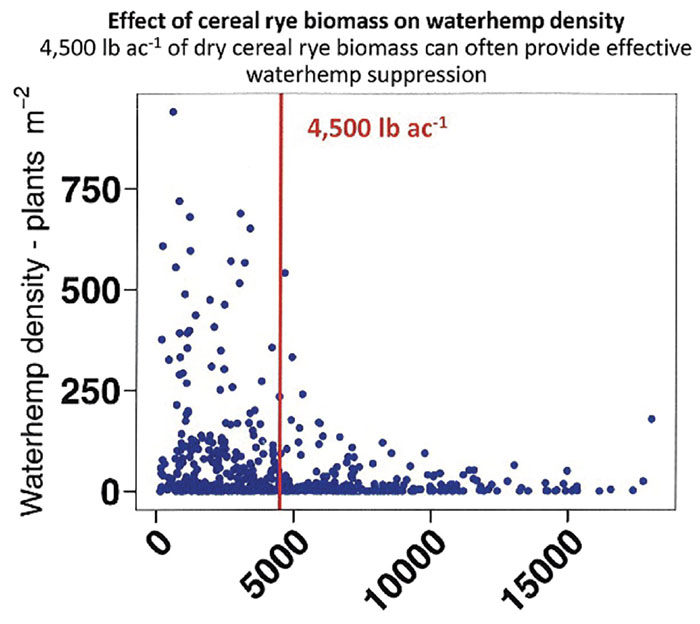No-Till Farmer
Get full access NOW to the most comprehensive, powerful and easy-to-use online resource for no-tillage practices. Just one good idea will pay for your subscription hundreds of times over.

BEST BIOMASS. The points on this chart show the number of waterhemp plants in a no-till soybean plot that had been cover cropped with cereal rye. The higher the amount of cereal rye biomass, the fewer waterhemp plants found in the plot. Chart: Jose Nunes
Cereal rye is a promising tool for weed control in no-till soybeans. Research from the University of Wisconsin-Madison finds using a cereal rye cover crop in addition to herbicides can keep fields clean without an impact on yield — as long as a good soybean stand is established
“A cover crop provides suppression, and the herbicide provides the chemical weed control,” says Jose Nunes, a graduate student at weed scientist Rodrigo Werle’s University of Wisconsin-Madison research and Extension lab. “That's why we recommend the adoption of both approaches at the same time.”
Nunes conducted a trial in Brooklyn, Wis., to determine how much cereal rye biomass was needed to suppress waterhemp in no-till soybeans. As biomass increased, the number of waterhemp plants decreased, but Nunes says maximum biomass isn’t necessary for adequate waterhemp suppression.
“When we go beyond 4,500 pounds per acre of dry biomass, that's when we start to see separation in waterhemp density,” Nunes says. “Different weed species like giant ragweed, which is a large broadleaf seed weed, are going to need a little bit more biomass. But for waterhemp, a small-seeded weed, 4,500 is good to aim for when you're terminating your cereal rye cover crop.”
A good stand of cereal rye — not the seeding rate — is key to achieving the right biomass, according to Nunes. He planted 60 pounds per acre of cereal rye in late September to early October and terminated it later the following spring.
“The earlier you can plant…